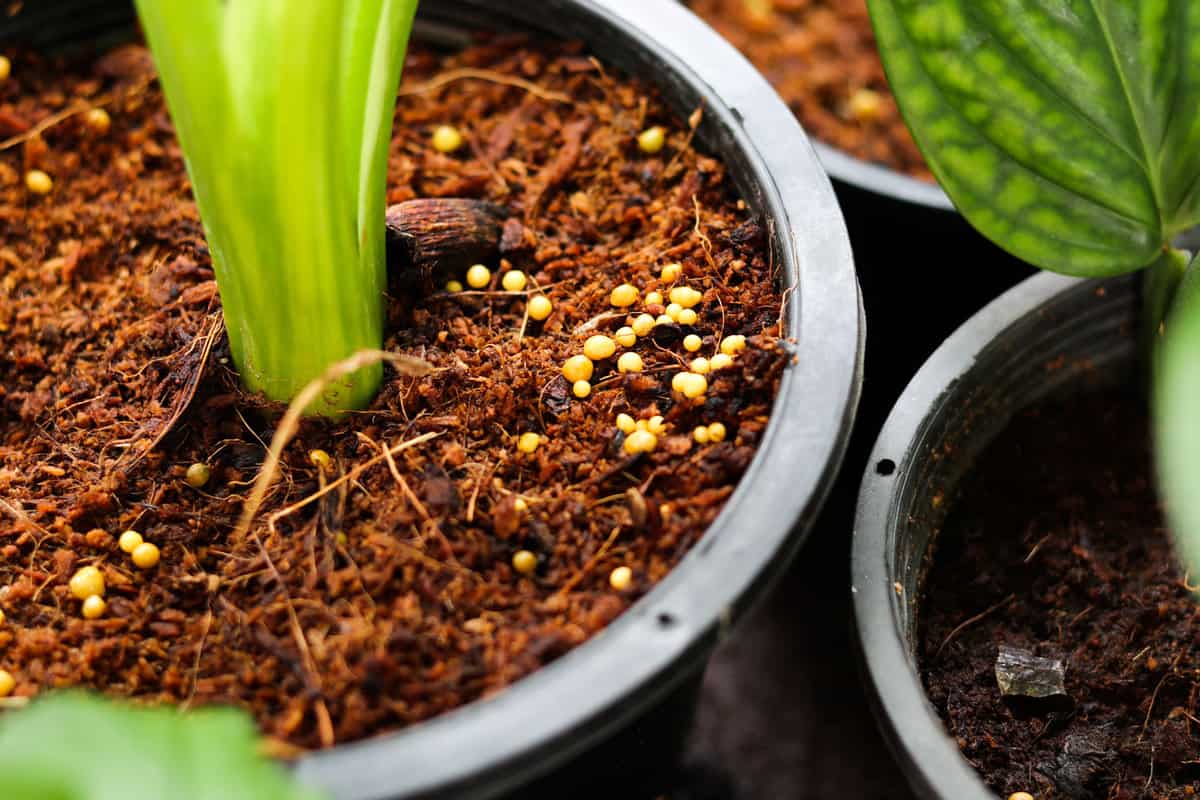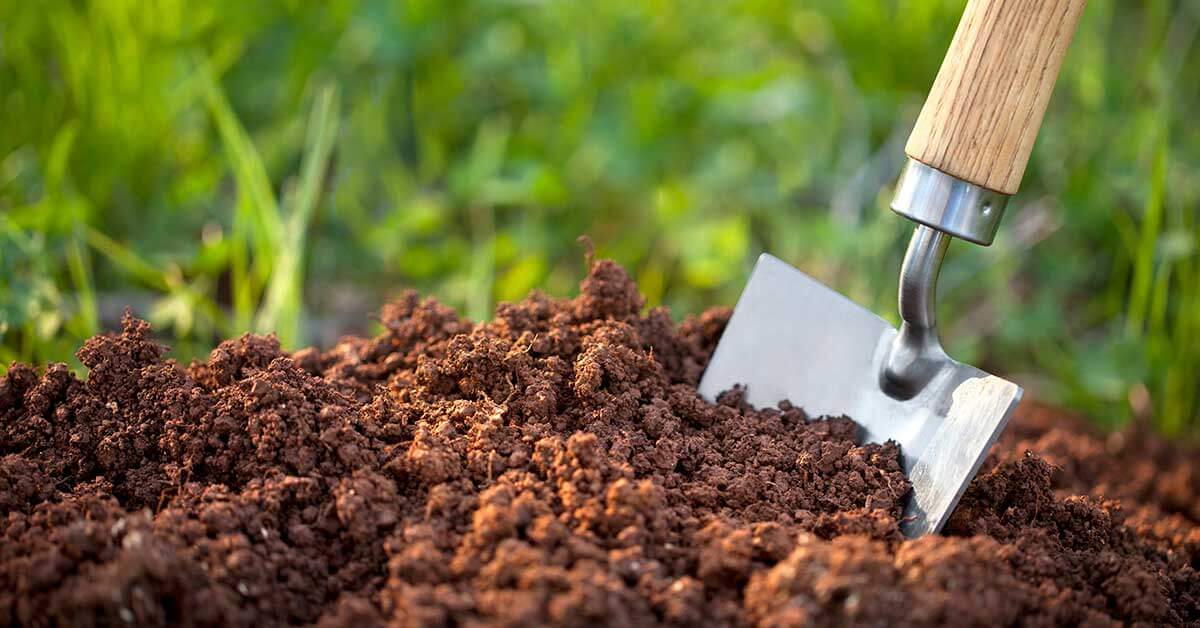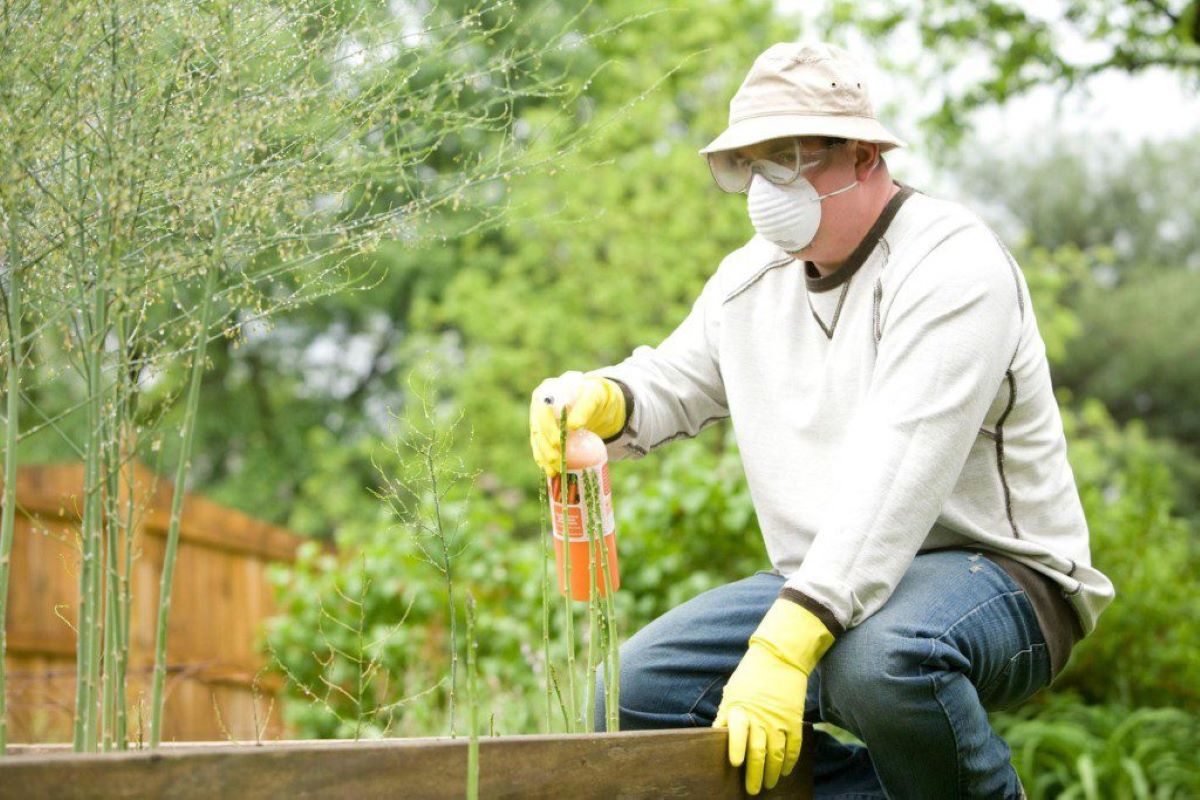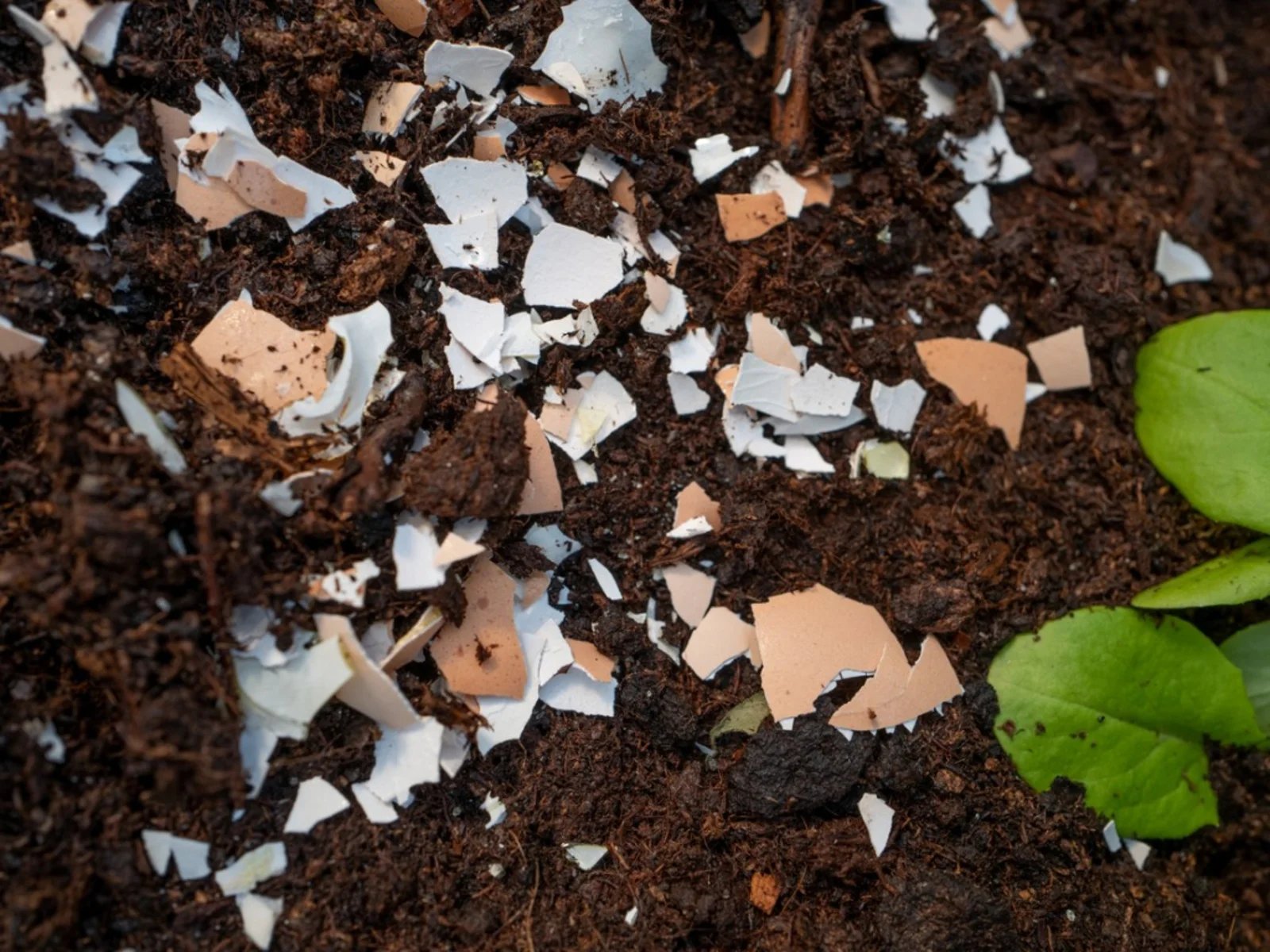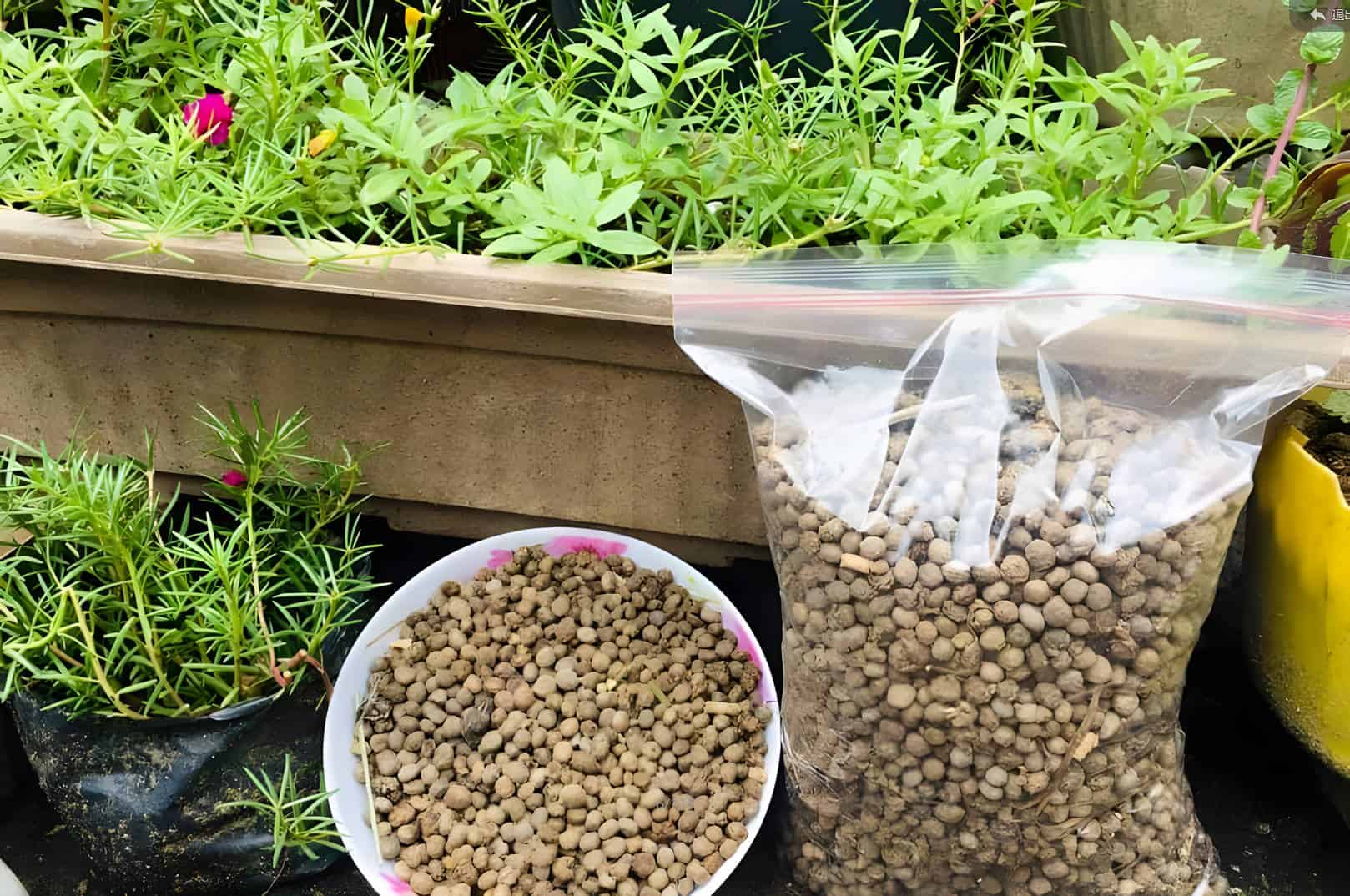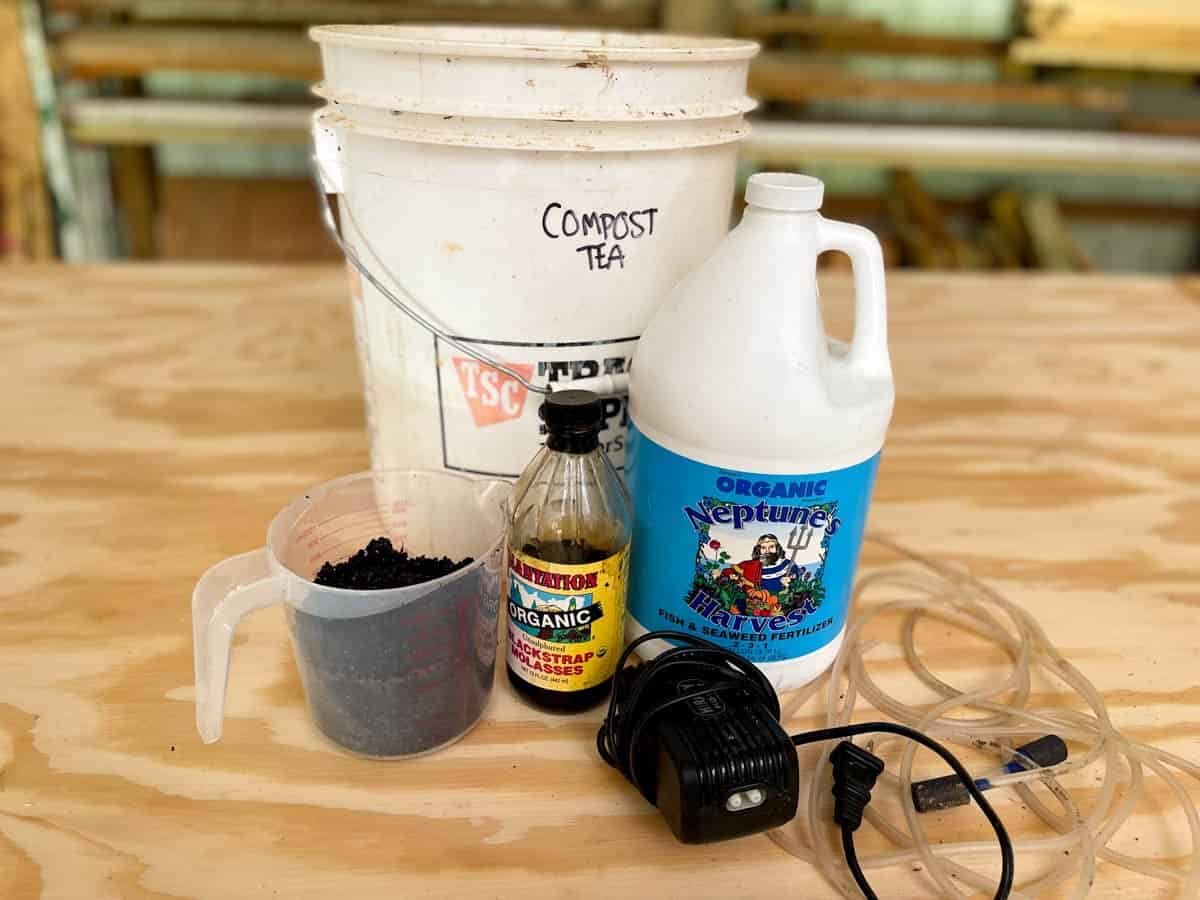Home>Gardening Basics>How Much 13-13-13 Fertilizer To Use Per Acre For Food Plots
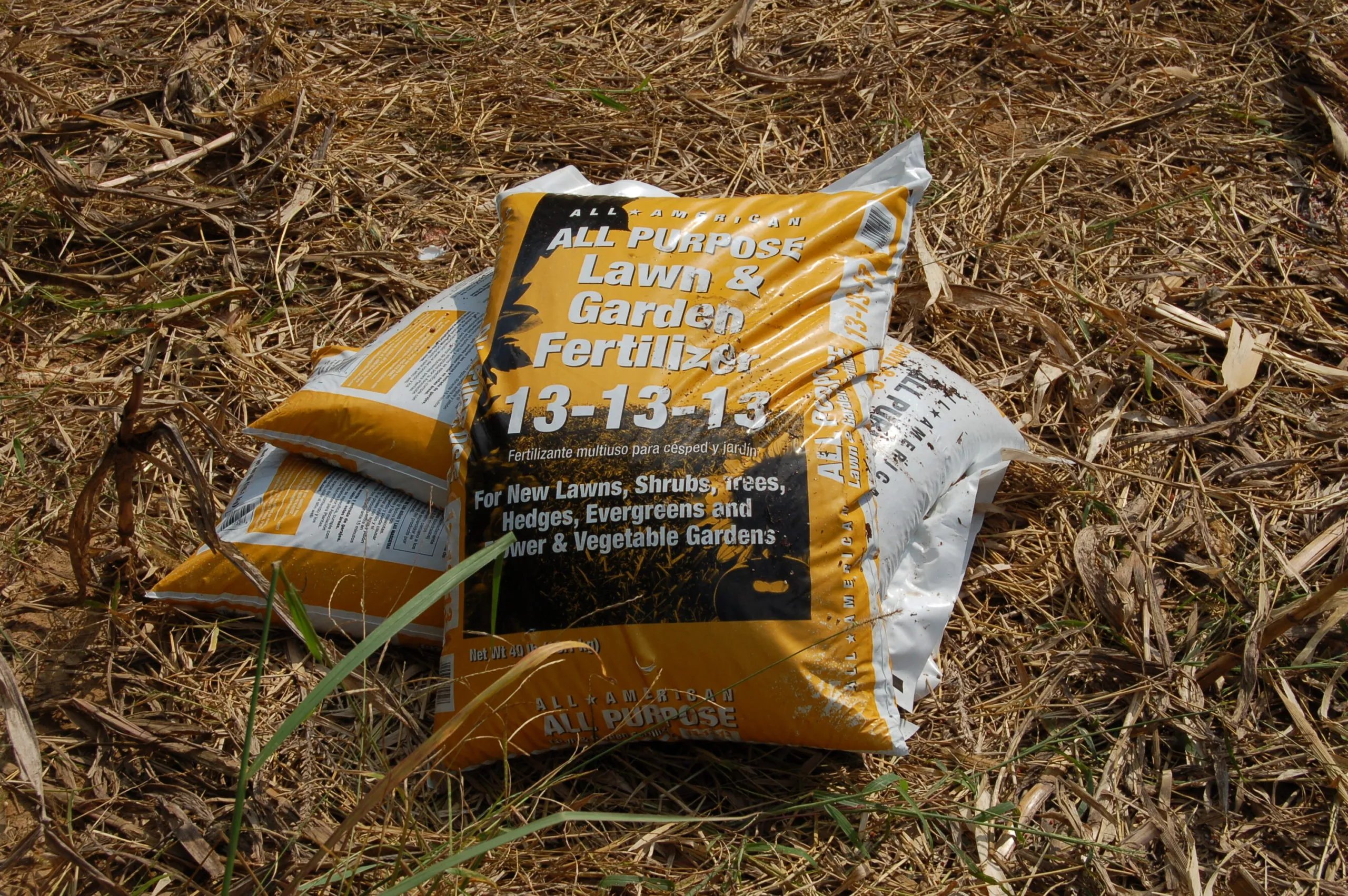

Gardening Basics
How Much 13-13-13 Fertilizer To Use Per Acre For Food Plots
Modified: January 22, 2024
Enhance your understanding of soil with our guide on how much 13-13-13 fertilizer to use per acre for your food plot.
(Many of the links in this article redirect to a specific reviewed product. Your purchase of these products through affiliate links helps to generate commission for Chicagolandgardening.com, at no extra cost. Learn more)
Table of Contents
- Introduction
- What is 13-13-13 Fertilizer?
- Importance of Fertilizing Food Plots
- Factors to Consider Before Applying 13-13-13 Fertilizer
- Calculating the Amount of 13-13-13 Fertilizer Needed per Acre
- Steps to Apply 13-13-13 Fertilizer on Food Plots
- Precautions and Safety Measures
- Tips for Maximizing the Effectiveness of 13-13-13 Fertilizer
- Conclusion
Introduction
Welcome to the world of soil and the fascinating realm of soil fertility! Understanding soil and its nutrient requirements is vital for anyone involved in agriculture, gardening, or landscaping. In this article, we will explore the role of 13-13-13 fertilizer in food plots and how to determine the optimal amount per acre for maximum yield.
Food plots are commonly used by farmers, hunters, and wildlife enthusiasts to attract and nourish wildlife populations. These strategically planted areas serve as a supplemental food source, providing essential nutrients to support healthy growth and development. However, to ensure the success of these food plots, it is imperative to maintain proper soil fertility.
One popular fertilizer option for food plots is 13-13-13 fertilizer, also known as triple thirteen fertilizer. This balanced fertilizer contains equal parts nitrogen (N), phosphorus (P), and potassium (K), the three essential macronutrients required in large quantities by plants.
The importance of fertilizing food plots cannot be overstated. Fertilizers replenish soil nutrients that are depleted over time due to plant uptake, leaching, and other environmental factors. By introducing fertilizer, we can supplement the soil with the nutrients necessary for plant growth and optimize crop yields.
Fertilizers like 13-13-13 provide plants with a balanced nutrient profile, ensuring that they receive the required amount of nitrogen, phosphorus, and potassium. Nitrogen is crucial for promoting vegetative growth and enhancing the plant’s ability to produce more foliage. Phosphorus is necessary for root development, fruit production, and overall plant vigor, while potassium helps improve plant resilience, disease resistance, and nutrient absorption.
Before applying 13-13-13 fertilizer to your food plot, several factors need to be taken into consideration. These include the soil type and its nutrient content, the specific nutrient requirements of your desired crops, and any existing soil imbalances. By understanding these factors, you can make informed decisions regarding the amount of fertilizer to apply, ensuring optimal plant growth and maximum yield.
What is 13-13-13 Fertilizer?
13-13-13 fertilizer, also known as triple thirteen fertilizer, is a balanced fertilizer that contains equal parts of three essential macronutrients: nitrogen (N), phosphorus (P), and potassium (K). The three numbers in the fertilizer’s name represent the percentage of each nutrient in the product. In this case, 13-13-13 signifies that the fertilizer contains 13% nitrogen, 13% phosphorus, and 13% potassium.
Nitrogen is a vital nutrient for plant growth as it is responsible for promoting leafy green vegetation and aiding in protein production. Phosphorus plays a critical role in root development, flower formation, and overall plant health. Potassium improves the plant’s ability to withstand stress, enhances disease resistance, and promotes carbohydrate synthesis.
One of the key advantages of using 13-13-13 fertilizer is its balanced nutrient content. A balanced fertilizer ensures that plants receive an equal proportion of the essential macronutrients, promoting overall plant health and development. This is particularly beneficial for food plots where different crops with varying nutrient requirements may be grown together.
Additionally, 13-13-13 fertilizer is versatile and can be used for a wide range of purposes. It is suitable for various crops, including vegetables, fruits, and grains, as well as ornamental plants. Whether you are growing crops for personal consumption, wildlife attraction, or aesthetics, 13-13-13 fertilizer can help provide the necessary nutrients for optimal growth and yield.
Another advantage of using 13-13-13 fertilizer is its ease of application. It is typically available in granular form, making it convenient to spread evenly over the soil. The granules slowly release nutrients over time, providing a steady supply of essential elements for the plants. This gradual release feature helps prevent nutrient leaching and ensures that the plants have a continuous supply of nutrients as they grow.
It is important to note that while 13-13-13 fertilizer provides a balanced nutrient profile, it may not address specific nutrient deficiencies in the soil. Before applying any fertilizer, it is advisable to conduct a soil test to determine the soil’s nutrient content and any deficiencies or imbalances present. Based on the soil test results, additional amendments or specific fertilizers targeting particular deficiencies may need to be incorporated into the fertilizer program.
Importance of Fertilizing Food Plots
Fertilizing food plots is crucial for achieving healthy plant growth, maximizing yield, and attracting wildlife. By providing essential nutrients, fertilizers play a significant role in enhancing soil fertility and plant health. Here are some key reasons why fertilizing food plots is important:
1. Nutrient Replenishment: Plants absorb essential nutrients from the soil as they grow. Over time, the soil’s nutrient levels can become depleted, especially in high-demand areas like food plots. Fertilizing helps replenish these nutrients, ensuring that plants have an adequate supply to support their growth and development.
2. Increased Crop Yield: Fertilizers supply plants with the necessary nutrients to reach their full potential. Well-nourished plants produce more vibrant foliage, stronger root systems, and larger fruits or grains. By fertilizing food plots, you can significantly increase the overall crop yield, whether for personal consumption or wildlife attraction.
3. Wildlife Attraction: Food plots are not only beneficial for farmers or gardeners but also for attracting and supporting wildlife populations. By providing nutrient-rich food sources through fertilizing, you can create a habitat that attracts a diverse range of wildlife species. This, in turn, enhances the biodiversity of the area and promotes a healthy ecosystem.
4. Soil Health & Structure: Fertilizers contribute to the overall health and structure of the soil. Nutrient-rich soils support beneficial microbial activity, which aids in breaking down organic matter and releasing nutrients for plant uptake. Fertilizing also improves the soil’s water-holding capacity and drainage, ensuring that plants have access to the right amount of moisture for optimal growth.
5. Nutrient Balance: Different plants have varying nutrient requirements. By using fertilizers, you can ensure that the food plot is supplied with the specific nutrients needed for the crops you are growing. By maintaining a proper balance of nutrients, you can prevent deficiencies or toxicities that can hinder plant growth and overall productivity.
6. Weed Control: A well-fertilized food plot promotes healthy plant growth, which can help suppress weed growth. Thick, vigorous plants shade the soil, making it difficult for weeds to establish and compete for resources. By fertilizing, you can create a more competitive environment for weeds, reducing the need for excessive herbicide use.
In summary, fertilizing food plots is an essential practice to optimize plant growth, crop yield, and wildlife attraction. Fertilizers replenish essential nutrients, promote soil health, and create an environment conducive to healthy plant growth. By incorporating a well-balanced fertilizer program, you can ensure the success of your food plot and enjoy bountiful harvests or thriving wildlife populations.
Factors to Consider Before Applying 13-13-13 Fertilizer
Before applying 13-13-13 fertilizer to your food plot, it is important to consider several factors to ensure optimal results. These factors include:
1. Soil Testing: Conducting a soil test is essential to determine the current nutrient levels and pH of the soil. This information helps you understand the specific needs of your food plot and the appropriate amount of fertilizer to apply. Soil testing kits or professional soil testing services can provide comprehensive results and recommendations.
2. Nutrient Requirements: Each crop has specific nutrient requirements for optimal growth and yield. Research the nutrient needs of the crops you plan to grow in your food plot. Understanding the specific macronutrient ratios needed will help you determine the appropriate amount of 13-13-13 fertilizer to apply.
3. Soil Composition: Different soil types have varying nutrient-holding capacities. Clay soils tend to hold onto nutrients more effectively, while sandy soils may require additional nutrient supplementation. Consider the composition of your soil to determine if any specific amendments or treatments are necessary, in addition to using 13-13-13 fertilizer.
4. Crop Rotation: Crop rotation is a beneficial practice that helps prevent nutrient depletion and reduces the risk of pests and diseases. If you practice crop rotation in your food plot, consider the nutrient needs of the previous crops and the residual nutrients left behind. Adjust the fertilizer application accordingly to meet the specific requirements of the new crop.
5. Environmental Factors: Environmental factors such as rainfall, temperature, and sunlight exposure can influence nutrient availability and uptake. Consider these factors when determining the appropriate timing and frequency of fertilizer applications. Adjustments may need to be made based on your location’s climate and seasonal variations.
6. Application Methods: There are several application methods available for 13-13-13 fertilizer, including broadcasting, banding, or incorporation. Consider the size of your food plot and the equipment available to determine the most efficient and effective method of fertilizer application.
7. Safety Precautions: When handling fertilizers, it is important to take appropriate safety precautions. Wear protective clothing, gloves, and goggles to avoid direct contact with the fertilizer. Follow the manufacturer’s instructions for proper handling, storage, and application to ensure your safety and the safety of the environment.
By considering these factors before applying 13-13-13 fertilizer to your food plot, you can optimize nutrient delivery, improve soil health, and promote the successful growth of your crops. Taking a proactive approach to fertilizer application ensures that your food plot receives precisely what it needs to thrive.
Calculating the Amount of 13-13-13 Fertilizer Needed per Acre
Determining the appropriate amount of 13-13-13 fertilizer to apply to your food plot is essential for effective nutrient supplementation. Calculating the right quantity of fertilizer ensures that your crops receive adequate nutrients without over-applying and risking nutrient imbalances or environmental harm. Here’s a step-by-step guide to help you calculate the amount of 13-13-13 fertilizer needed per acre:
1. Determine Nutrient Requirements: Consult agricultural extension resources or crop-specific guidelines to determine the recommended nutrient requirements for the crops you are growing in your food plot. These guidelines will typically provide information on the desired nutrient levels, such as nitrogen (N), phosphorus (P), and potassium (K), for optimal growth and yield.
2. Soil Test Analysis: Conduct a soil test to assess the current nutrient levels and pH of your soil. The soil test results will indicate any nutrient deficiencies or imbalances present in your food plot. Use this information as a baseline to determine the amount of 13-13-13 fertilizer needed to meet the desired nutrient levels.
3. Determine Fertilizer Quantity: The nutrient content of 13-13-13 fertilizer is equal parts of nitrogen, phosphorus, and potassium, with each nutrient constituting 13% of the total fertilizer weight. To calculate the amount of fertilizer needed per acre, you must determine how much of each nutrient should be applied based on the recommended nutrient application rates obtained from step 1.
4. Fertilizer Rate Calculation: Multiply the recommended nutrient application rate by the appropriate nutrient proportion in 13-13-13 fertilizer. For example, if your recommended nitrogen application rate is 100 pounds per acre, and the nitrogen content in 13-13-13 fertilizer is 13%, you would multiply 100 by 0.13 (13 / 100) to calculate the amount of 13-13-13 fertilizer required to supply 13 pounds of nitrogen per acre.
5. Repeat for Other Nutrients: Repeat this calculation for each nutrient in the 13-13-13 fertilizer (phosphorus and potassium) based on the recommended application rates for each nutrient. This will give you the total amount of 13-13-13 fertilizer needed to supply the desired nutrient levels for your food plot.
6. Adjust for Fertilizer Analysis: Fertilizer analysis may vary among different brands or batches. Adjust the amount of 13-13-13 fertilizer based on the actual nutrient content specified on the fertilizer bag. For example, if the actual nitrogen content is 12%, adjust the amount of fertilizer accordingly to achieve the desired application rate.
7. Application Method: Consider the application method, such as broadcasting or banding, to determine the appropriate spreader settings or fertilizer placement for even distribution. Follow the product instructions for proper application guidelines.
By following these steps and considering your specific crop’s nutrient requirements, soil conditions, and fertilizer analysis, you can accurately calculate the amount of 13-13-13 fertilizer needed per acre for your food plot. This targeted approach will help ensure that your crops receive the necessary nutrients for healthy growth and optimal yields.
Steps to Apply 13-13-13 Fertilizer on Food Plots
Applying 13-13-13 fertilizer to your food plots requires careful planning and proper execution to ensure even distribution and maximum nutrient absorption by the crops. Follow these steps to effectively apply 13-13-13 fertilizer on your food plots:
1. Prepare the Soil: Before applying fertilizer, prepare the soil by removing any weeds, rocks, or other debris. Use a tiller, hand tools, or appropriate equipment to loosen the top few inches of soil, creating a suitable seedbed for the crops.
2. Determine Application Method: Consider the size of your food plot and the available equipment to determine the most appropriate application method. Broadcasting using a spreader is commonly used for larger areas, while hand-held spreaders or shovels can be used for smaller or irregularly shaped plots.
3. Calculate the Application Rate: Refer to the calculations made in the previous section to determine the appropriate amount of 13-13-13 fertilizer needed per acre based on your crop’s nutrient requirements and soil conditions.
4. Calibrate the Spreader: If you are using a mechanical spreader, calibrate it according to the recommended settings for the specific fertilizer being applied. This ensures even distribution of the fertilizer across the food plot and avoids over- or under-application.
5. Begin Application: Start by dividing your food plot into smaller sections or grids. Begin applying the 13-13-13 fertilizer from one side of the plot, moving in a systematic pattern to ensure even coverage. Walk at a steady pace, maintaining a consistent spreader setting for uniform distribution.
6. Overlap for Uniformity: To ensure complete coverage, overlap the spreader pattern slightly with each pass. This overlap compensates for any gaps or uneven spreading, resulting in more uniform distribution of the fertilizer across the entire food plot.
7. Follow Safety Precautions: When handling and applying fertilizer, always follow safety precautions as specified on the product label. Wear appropriate protective gear, such as gloves and goggles, to protect yourself from direct contact with the fertilizer.
8. Water the Fertilizer: After applying the 13-13-13 fertilizer, water the food plot if feasible. This helps dissolve the fertilizer granules and facilitates nutrient uptake by the plants. Watering also helps settle the fertilizer into the soil, preventing it from being easily washed away by rain or irrigation.
9. Monitor and Adjust: Regularly monitor the progress of your food plot and the overall health of the crops. This allows you to assess the effectiveness of the fertilizer application and make any necessary adjustments or supplemental feedings if nutrient deficiencies or imbalances are identified.
By following these steps, you can ensure that your food plots receive the appropriate amount of 13-13-13 fertilizer and create favorable conditions for healthy crop growth and optimal yields.
Precautions and Safety Measures
When working with any type of fertilizer, including 13-13-13 fertilizer, it is important to prioritize safety to protect yourself, others, and the environment. Here are some precautions and safety measures to consider when handling and applying 13-13-13 fertilizer:
1. Read and Follow Instructions: Carefully read and follow the instructions provided on the fertilizer packaging. This includes guidance on proper handling, storage, and application methods. Adhering to these instructions will help ensure safe and effective fertilizer usage.
2. Wear Protective Gear: Always wear appropriate protective gear when handling and applying fertilizer. This may include gloves, safety glasses, long-sleeved shirts, long pants, and closed-toe shoes. Protective gear helps minimize contact with the fertilizer and prevents skin or eye irritation.
3. Avoid Inhalation: Fertilizer particles or dust can be harmful if inhaled. When working with 13-13-13 fertilizer, avoid breathing in the particles by working in well-ventilated areas or using a mask or respirator if necessary.
4. Prevent Contamination: Take steps to prevent fertilizer contamination of water sources, such as rivers, lakes, or wells. Avoid applying fertilizer near bodies of water or areas prone to runoff. Be mindful of any local regulations or guidelines regarding fertilizer application to protect water quality.
5. Store Fertilizer Properly: Store 13-13-13 fertilizer in a safe and secure place away from children, pets, and any potential ignition sources. Keep the fertilizer in its original packaging with the lid tightly sealed. Store the fertilizer in a cool, dry area to prevent moisture absorption and potential clumping.
6. Dispose of Excess Fertilizer Properly: If you have leftover fertilizer, do not dispose of it in the trash or pour it down the drain. Contact your local waste disposal facility or follow guidelines provided by your municipality for proper disposal methods. Residual fertilizer should not be left exposed where it can potentially runoff into water bodies.
7. Be Cautious of Fertilizer Burn: Over-application of fertilizer can lead to fertilizer burn, causing damage to plant roots and foliage. Follow the recommended application rates to avoid excessive fertilizer usage. If accidental over-application occurs, promptly water the area to dilute and minimize potential damage.
8. Keep Fertilizer Away from Children and Pets: Store and handle fertilizer in an area that is inaccessible to children and pets. Fertilizers may be poisonous if ingested, and accidental ingestion can cause serious health issues. If ingestion occurs, contact a medical professional or emergency services immediately.
9. Follow Local Regulations: Familiarize yourself with any local regulations or guidelines regarding fertilizer use. Different regions may have specific rules or restrictions relating to fertilizer application rates, timing, or specific nutrients. Adhering to these guidelines helps protect the environment and ensures compliance with local laws.
By following these precautions and safety measures, you can handle and apply 13-13-13 fertilizer safely and responsibly. It is important to prioritize safety to prevent accidents, protect yourself and others, and minimize environmental impacts.
Tips for Maximizing the Effectiveness of 13-13-13 Fertilizer
When using 13-13-13 fertilizer on your food plots, there are several tips and techniques you can employ to maximize its effectiveness and ensure optimal plant growth and yield. Here are some valuable tips to consider:
1. Conduct a Soil Test: Before applying any fertilizer, conduct a soil test to assess the nutrient levels and pH of your soil. This provides valuable information about your soil’s composition and guides you in making informed decisions about fertilizer application rates and nutrient amendments.
2. Follow Recommended Application Rates: Adhere to the recommended application rates for 13-13-13 fertilizer based on the specific nutrient requirements of your crops. Applying the correct amount ensures that plants receive the necessary nutrients without risking nutrient imbalances or environmental harm.
3. Time Fertilizer Application: Consider the growth stages of your crops and the specific nutrient needs during each stage. Time your fertilizer applications accordingly to provide the right nutrients when the plants require them the most. For example, apply fertilizer before planting or during early growth stages to promote vigorous root development.
4. Incorporate Fertilizer Properly: Ensure that the 13-13-13 fertilizer is adequately mixed into the soil to promote even nutrient distribution and prevent nutrient loss through leaching or runoff. Incorporate the fertilizer into the soil during initial soil preparation or use a suitable method such as banding to place the fertilizer close to the plants’ root zone.
5. Water Thoroughly: After applying 13-13-13 fertilizer, water the food plot well to activate the fertilizer and aid in nutrient uptake. Watering helps dissolve the fertilizer granules, making the nutrients available for plant roots. Adequate moisture also helps prevent nutrient loss and ensures effective nutrient absorption.
6. Monitor Plant Health: Regularly monitor the health and progress of your plants. Observe their growth, color, and overall vitality. If you notice any signs of nutrient deficiencies or excesses, adjust your fertilizer application accordingly to address the specific needs of the plants.
7. Consider Split Applications: For crops with longer growing seasons, consider applying 13-13-13 fertilizer in multiple smaller doses throughout the growing period. This approach ensures a continuous supply of nutrients to support sustained plant growth and avoids nutrient leaching or wastage.
8. Maintain Proper Soil pH: 13-13-13 fertilizer is effective in neutral to slightly acidic soil conditions. Adjust soil pH if needed to ensure optimal nutrient availability. Proper pH levels enhance nutrient uptake and utilization by the plants, allowing them to fully benefit from the applied fertilizer.
9. Implement Organic Matter Practices: Improve soil structure and nutrient retention by incorporating organic matter, such as compost or well-rotted manure, into the soil. Organic matter enhances soil fertility, increases water-holding capacity, and promotes beneficial microbial activity, improving the effectiveness of 13-13-13 fertilizer.
By following these tips, you can maximize the effectiveness of 13-13-13 fertilizer and promote healthy plant growth in your food plots. Proper fertilizer application and management practices lead to robust crops, increased yields, and a thriving agricultural or wildlife habitat.
Conclusion
Understanding soil fertility and the role of 13-13-13 fertilizer in food plots is essential for successful crop growth and wildlife attraction. By replenishing nutrients and maintaining a balanced nutrient profile, 13-13-13 fertilizer provides the essential macronutrients needed for optimal plant development. Through careful consideration of factors like soil composition, nutrient requirements, and environmental conditions, you can calculate the appropriate amount of fertilizer and apply it effectively to your food plots.
By fertilizing food plots, you can significantly increase crop yield, attract diverse wildlife populations, and promote a healthy ecosystem. Fertilizers like 13-13-13 provide a convenient option with balanced nutrient content suitable for a variety of crops and landscape purposes. By following safety precautions, preventing pollution, and adhering to local regulations, you can handle and apply fertilizers responsibly.
To maximize the effectiveness of 13-13-13 fertilizer, consider conducting soil tests, following recommended application rates, and timing fertilizer applications appropriately for each crop’s growth stages. Incorporating the fertilizer properly, providing adequate water, and monitoring plant health are crucial steps to ensure optimal nutrient uptake and overall plant vitality. Additional practices, such as organic matter incorporation and maintaining proper soil pH, further enhance the effectiveness of 13-13-13 fertilizer.
Implementing these guidelines and best practices will help you achieve thriving food plots with robust plant growth, high yields, and an environment conducive to attracting wildlife. By combining a deep understanding of soil, nutrient requirements, and proper fertilizer application techniques, you can create a successful and sustainable food plot that fulfills your agricultural, gardening, or wildlife attraction goals.
